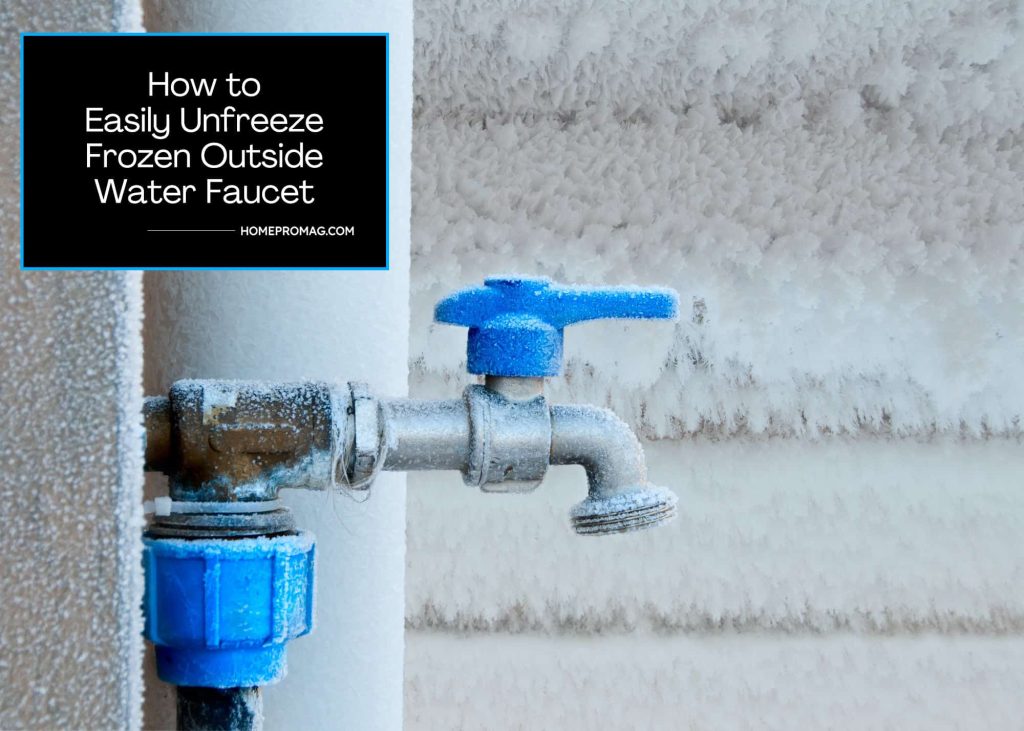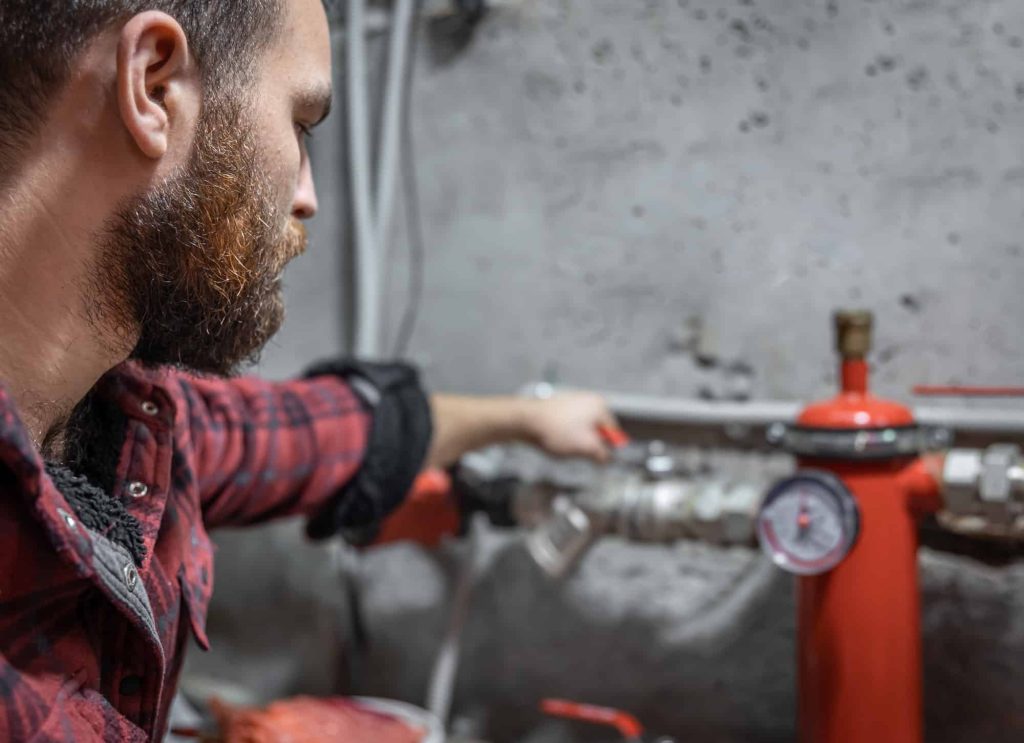Outside water faucets can stop working at any given time. It is the nature of most things made by man.
Hardware deterioration can happen over time due to the wear and tear of everyday use. To fix an outside water faucet that stops functioning, you have to identify the cause of the problem first and then fix it.
Why Outdoor Water Faucets Don’t Work
These are the most common reasons outdoor water faucets won’t turn on.
1. Main water supply issues
Sometimes the issue may not be your outdoor water faucet. To be sure, first, check your indoor water faucets to see if any water comes through them.
Secondly, check with your neighbors. If your neighbors are experiencing the same problem, you know the issue is not your outdoor water faucets. But if your neighbors have water and you don’t, check with your water supplier to find out what the problem could be.
Thirdly, check with your local water supplier. The supplier may cut off the water supply for various reasons like maintenance or shortage. Maybe you did not pay your water bill?
2. Broken pipe(s)
Leakages within the plumbing system could be why water won’t come out of the faucet.
The water flows from the source but is interrupted at the point where the pipe has cracked. Broken pipes buried in the ground may go undetected for a while. You may notice an unusual wet spot in your backyard, growth of mold in concrete areas, or a lush growth that wasn’t there in your garden.
These are tell-tale signs of a broken underground pipe and why water does not reach the faucet.
How to Fix Broken Pipe Issues
Locate the point of leakage using the guide above. Expose the broken by digging up the area. On pavements, carefully remove the paving blocks and put them aside for reuse after the repair. Dig up the soil gently to access the broken pipe.
Once you find the broken pipe and ascertain the crack, turn off the water at the main-supply source to stop the flow and further loss of water. It also allows you to work with ease.
To fix the pipe, cut a few inches(2-4) to each side of the breakage. Measure the cut-out and use that measurement to cut the PVC pipe. Slip the rubber coupling onto each side of the cut pipe. Insert the new PVC pipe between the rubber couplings.
Test the repair by turning on the water at the main valve. No leakage means a successful repair. Cover the pipe with fine gravel or soil. Restore the spot to its initial state.
- Tools required:
- Cutting tools- depending on the material of your pipes, you could need a hacksaw for lead and clay pipes and a metal cutting blade for cast iron pipes. you can use a handsaw or plastic pipe cutter for PVC pipes
- Pvc pipe (same diameter as the damaged pipe)
- Measuring tape
- Flexible Rubber Coupling
- Blocked pipe.
Blockages in the pipe create a barrier preventing water from flowing through the pipes. pipes may clog due to one of the following reasons:
1. Sediment build-up
Minerals, rust, dirt, and metal segments present in the water solidify and clog pipes.
To fix this, inspect the pipes for blockages. Use a bristle brush with a long handle to clean the piping. You could have a plumber come and look at the system if you find it hard to locate and clear the blockage. Plumbers have specialized equipment to detect and clear pipe blockages.
2. Frozen pipes
Ice stuck within the pipe length may be blocking water from reaching the faucet. Thaw the ice using methods discussed in our ‘Outside Water Faucet Frozen, How to Easily Unfreeze’ article, and you should have water flowing out of the faucet in no time.

3. Rust
Most outdoor water faucets are metal that is at a high risk of corrosion. Being exposed to air and wet condition for a long time may cause the faucet to stop working. Rust causes the faucet to get stuck. It just won’t move when you turn the handle.
Inspect the interior to see the extent of the damage. Rust in the exterior of the faucet could be an indication of more rust stuck in the interior. You may need to replace the entire faucet. Use a wrench to loosen the worn-out faucet and install a new one in its place.
4. Broken handle
A broken handle will not allow you to turn on a faucet. The only solution to a broken handle is to replace it. Finding faucet handles may be difficult. It is way easier to find the entire thing at any local hardware or home improvement store. You can opt to buy the faucet and even take the chance to switch to a better or modern design.
Always turn off the main water supply valves before you begin any major repair on your outdoor water faucet. When you finish doing the repairs, you can test the connection. Ensure the main water supply valve is on, and turned in the anti-clockwise direction.
If not, do turn it on. You can then turn on the water faucet. If you followed our steps precisely, water should come out of the outdoor faucet at reasonably high pressure. No water means the repair did not work. You will need to call a more experienced and skilled person to take a look and fix it for you.
How to turn on a water faucet
When you turn on a faucet, you expect water to flow out or through. The water has to be allowed from the source, so ensure the main supply valve is on.
Turn on the water faucet by turning the handle in the anti-clockwise direction. This action releases pressure from the compression valve that covers the valve seat to let out water.
How to turn off an outdoor water faucet
To turn off an outdoor water faucet, turn the handle clockwise. The compression valve will exert pressure on the valve seat to cover the opening and stop water from running.
It’s all simple.
Read more on outdoor water faucets:

